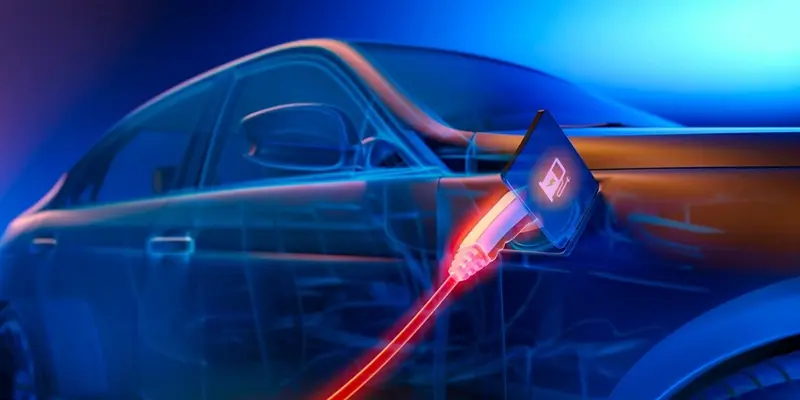
THIS IS AN ADVERTISING FEATURE
A radical energy transition is underway, driven by a combination of environmental, policy and technology factors. Our energy system is being electrified and decarbonised, switching away from fossil fuels into clean, renewable sources of energy. The effect will be transformational.
According to the International Energy Agency (IEA), energy is responsible for two-thirds of all greenhouse gas emissions[1], with transport accounting for 24% of direct CO2 emissions from fuel combustion[2]. It is unsurprising that power and transportation are clear areas of focus for the energy transition. A great deal has been achieved in the development of renewables power generation and electric vehicles. Breakthroughs in battery energy storage technology have been a key enabler.
Batteries are a key enabler in the energy transformation story
In the transportation market, electric vehicles (EVs) need a portable electricity source. Batteries are that solution.
In power markets, renewable sources of electricity including wind and solar can be intermittent. Batteries can store excess production and release it at times of higher demand.
A green recovery underway
Coming into the COVID-19 crisis it was unclear whether the efforts to decarbonise would be derailed as priorities of policy makers and consumers could have changed. However, the evidence indicates that the decarbonisation effort is intensifying.
Renewable power is growing robustly and defying the difficulties posed by the COVID-19 pandemic. According to IEA, 90% of the expansion in total power capacity in 2020 came from the renewables sector[3], contrasting the sharp declines from oil, coal and gas. A record level of 200 gigawatts of power from renewables is likely to be generated driven by increasing installations in China and the United States. Looking to 2021, India and the European Union are likely to propel renewables growth even further with renewable capacity additions of nearly 10%. By 2025, renewables are projected to become the largest source of energy surpassing coal and ending coal’s five decades of dominance.
Electric vehicles - an alternative to internal combustion engine vehicles - are growing rapidly. Battery electric vehicles and plug-in hybrid electric vehicles are likely to account for just under 3% of auto sales in 2020 according to Wood Mackenzie. According to their forecasts that should rise to close to 40% by 2040.
Just in recent months, Japan and South Korea have announced that they want to become carbon neutral by the year 2050; China by the year 2060. The European Union which had previously announced its ambition for carbon neutrality by 2050 has articulated a steppingstone of reducing carbon emissions by 55% by the year 2030 (relative to 1990 levels). In November 2020, the UK announced plans to bring forward the ban on pure petrol and diesel car sales to 2030 (which was previously 2035). Policymakers appear to be doubling down rather than easing off in their efforts to avert climate change.
The battery value-chain
The battery value chain is made up of a myriad of industries across the globe. The mining and chemical industries each provide raw materials to manufacture battery cell components. Cells are then packed for different applications - such as the increasingly popular EVs. At the end of life, batteries are recycled or used for secondary applications, such as energy storage systems (ESS). Many companies stretch across different elements of the value chain, perhaps integrating the sourcing of raw materials with manufacturing.
In addition, a series of industries evolve symbiotically with this value chain. Charging infrastructure and smart grid software providers can both benefit from, and support, the growth of the EV industry.
The energy transition megatrend is likely to present a great opportunity across the battery value chain - especially in the upstream and midstream segments.
To learn more about investing in battery solutions, please visit: Battery Solutions | WisdomTree Europe
To access a list of relevant battery products within the AJ Bell Youinvest platform, please visit: AJ Bell Youinvest - Battery Solutions
This material is prepared by WisdomTree and its affiliates and is not intended to be relied upon as a forecast, research or investment advice, and is not a recommendation, offer or solicitation to buy or sell any securities or to adopt any investment strategy. The opinions expressed are as of the date of production and may change as subsequent conditions vary. The information and opinions contained in this material are derived from proprietary and non-proprietary sources. As such, no warranty of accuracy or reliability is given and no responsibility arising in any other way for errors and omissions (including responsibility to any person by reason of negligence) is accepted by WisdomTree, nor any affiliate, nor any of their officers, employees or agents. Reliance upon information in this material is at the sole discretion of the reader. Past performance is not a reliable indicator of future performance.
[1] https://www.iea.org/topics/climate-change
[2] https://www.iea.org/reports/tracking-transport-2020
[3] https://www.iea.org/news/renewable-power-is-defying-the-covid-crisis-with-record-growth-this-year-and-next



